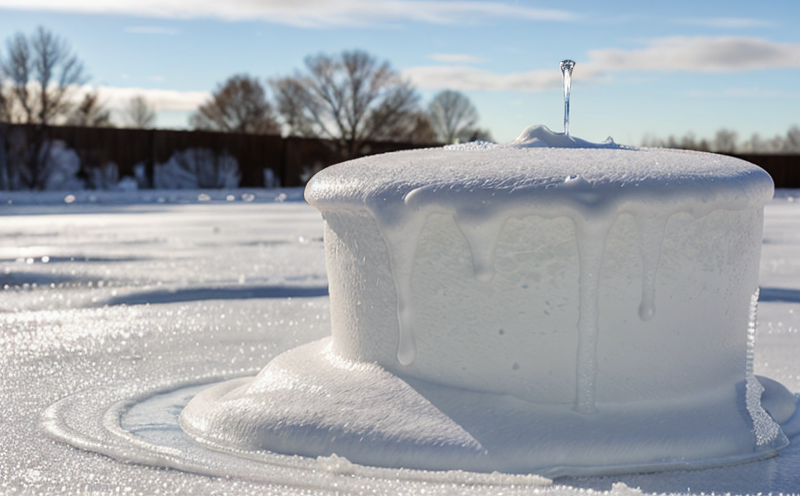SAE ARP 5905 Engine Icing and Ice Crystal Ingestion Testing
The SAE ARP 5905 standard is a critical benchmark in the aerospace industry for testing engine icing resistance. This standard specifies methods to evaluate the ice crystal ingestion tolerance of aircraft engines, ensuring they can operate safely under severe weather conditions. The primary goal is to ensure that engine performance remains stable and reliable during operations where ice crystals may be ingested into the compressor or turbine.
The test procedure involves simulating real-world icing environments in a laboratory setting. This includes generating controlled levels of ice crystal ingestion, measuring the resultant effects on the engine’s operation, and assessing any potential damage or degradation to critical components. The testing process is designed to replicate the conditions that engines might encounter during flights through cloud layers containing supercooled water droplets.
The SAE ARP 5905 protocol requires thorough preparation of the test specimens—typically engine cores or sections thereof—to ensure accurate and reliable data collection. These specimens are subjected to a series of tests aimed at determining how well they withstand ice crystal ingestion, including:
- Pre-testing inspections
- Ice crystal formation in controlled chambers
- Ingestion simulation through the engine’s inlet
- Performance evaluation post-ingestion
- Post-test inspections for damage assessment
The use of this standard is essential for compliance with regulatory bodies and industry best practices. It ensures that aircraft engines are robust enough to perform safely in various weather conditions, reducing the risk of mid-air incidents due to engine failure.
Compliance with SAE ARP 5905 not only enhances safety but also supports the certification process for new aircraft models. By adhering to this standard, manufacturers can ensure that their products meet rigorous performance benchmarks set by industry leaders and regulatory authorities such as FAA (Federal Aviation Administration).
The test results generated from following SAE ARP 5905 provide valuable insights into an engine’s durability under icing conditions. These insights are crucial for ongoing research and development efforts aimed at improving engine design and materials to better withstand harsh weather environments.
Moreover, the standard encourages continuous improvement by providing a framework for testing that can be adapted as new technologies emerge or environmental factors evolve. This adaptability is vital in an industry where both technology and climate change are rapidly advancing.
Benefits
Enhanced Engine Reliability: Ensures that engines can operate safely and reliably under icing conditions, reducing the risk of mid-air incidents due to engine failure.
Compliance with Industry Standards: Helps aerospace manufacturers meet stringent regulatory requirements set by bodies such as FAA (Federal Aviation Administration).
Improved Safety: By ensuring that engines are robust enough to withstand harsh weather conditions, this testing contributes significantly to overall aviation safety.
Cost Savings: Early identification of potential issues can prevent costly delays and rework in the development phase.
Industry Applications
Aircraft Engine Manufacturers: Essential for ensuring that engine designs meet rigorous safety standards.
R&D Engineers: Provides a framework for continuous improvement and innovation in engine design to better withstand harsh weather conditions.
Quality Managers: Ensures compliance with industry best practices, supporting the certification process for new aircraft models.
Procurement Teams: Helps in selecting suppliers who adhere to high-quality testing standards, ensuring reliable component supply chains.
International Acceptance and Recognition
The SAE ARP 5905 standard is widely recognized within the aerospace industry. It is often referenced by regulatory bodies such as the Federal Aviation Administration (FAA) in their guidelines for aircraft certification. The international community, including organizations like the European Union Aviation Safety Agency (EASA), also acknowledges this standard, further emphasizing its importance and acceptance on a global scale.
Adherence to SAE ARP 5905 not only ensures compliance with local regulations but also facilitates smoother market entry for aerospace products in various countries. It is a testament to the ongoing efforts to enhance safety standards across the industry.





